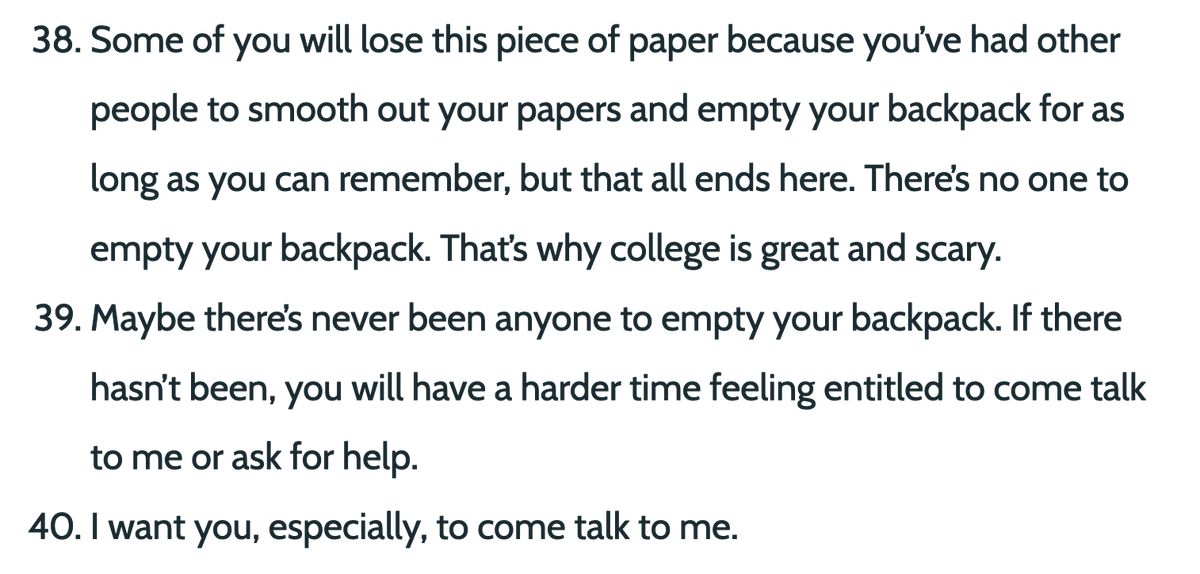-
If you're wondering how your course planning and syllabus can contribute to supporting our diverse students, here's a compilation of best practices addressing gender, race, disability, income and first-generation students. docs.google.com/document/d/1DWGQZ65O6sYPIIn__JryZ5xL6UclJGWWEGHg9VVe3JY/edit?usp=sharing
-
Some areas of note: 1. Syllabus is just one piece of course design and you can't address everything there. Addressing things at the beginning of a course should open doors for conversations and support.
-
2. By default, our office doors will not feel equally accessible to all students. Proactively addressing forms of marginalization can make everyone feel welcome (and will also increase your teaching work). Text from Sonia Huber's shadow syllabus: sonyahuber.com/2014/08/20/shadow-syllabus/
-
3. As linked throughout this document, there is a lot of active conversation about how to support marginalized students, teach about power and inequality, facilitate difficult conversations, and demolish invisible barriers to participation and learning.
-
4. Some invisible barriers you may not be thinking about: the price of textbooks, the fear of harassment and stalking, inaccessible course materials.
-
This guide was compiled by a group of faculty and graduate students in my department five years ago. We sought out resources and policies from our university; you should do this too. There's definitely room for improvement, and I'd love constructive feedback.
